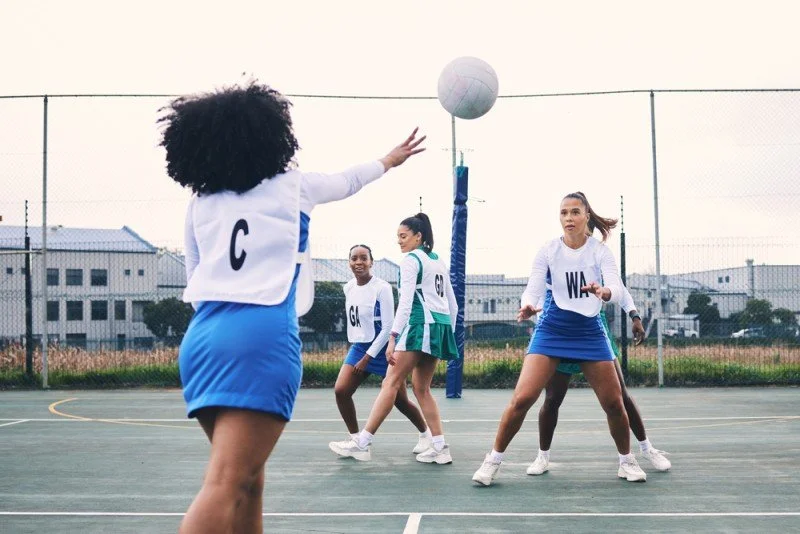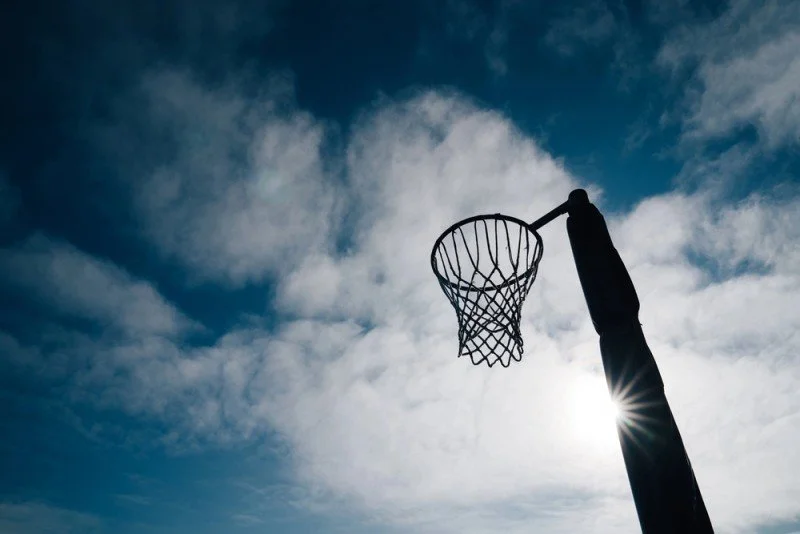Netball Specific Sports Injuries: Treatment, Prevention, and Physiotherapy in Melbourne’s North-West
▫️Written by John Keller
✅ Reviewed by Dr. Jenny Hynes on October 3, 2025
Why netball players in Essendon and Niddrie are at risk of injury?
Netball is one of Australia’s most popular team sports, played passionately across Essendon, Niddrie, Keilor, Keilor East, Tullamarine, Airport West, and surrounding suburbs. Its high-speed nature — with frequent jumping, landing, pivoting, and rapid changes of direction — makes it exciting but also physically demanding.
At Keilor Road Physiotherapy, our experienced team regularly treats netball specific sports injuries ranging from mild sprains to complex ligament tears. We combine hands-on care, advanced assessment tools, and tailored exercise rehabilitation to help players recover safely and return stronger than ever.
Common Netball Injuries and Why Female Athletes Are More Vulnerable
Netball places high stress on the ankles, knees, fingers, shoulders, and shins, making these the most commonly injured areas. Female athletes, in particular, are more vulnerable to certain injuries due to differences in biomechanics, joint laxity, and hormonal influences.
Ankle Sprains
Ankle sprains often occur when landing awkwardly or stepping on another player’s foot. Females tend to experience more frequent sprains due to reduced ankle stiffness and proprioceptive awareness (Fong et al., 2007). At Keilor Road Physiotherapy, we provide early assessment, taping, and targeted ankle injury rehabilitation to restore balance and prevent re-sprains.
Knee Injuries
Knee injuries — especially ACL tears and meniscus damage — are serious concerns in netball. Female players are up to six times more likely to sustain an ACL injury than males (Hewett et al., 2006) because of landing mechanics and hormonal factors. Our physiotherapists deliver evidence-based knee rehabilitation programs in our on-site studio, focusing on strength, agility, and safe return to play.
Finger and Hand Injuries
Frequent passing and contact can lead to finger sprains, dislocations, or fractures. At Keilor Road Physiotherapy, we use splinting, protective taping, and mobility exercises to restore grip and dexterity quickly so players can return to shooting and passing with confidence.
Shoulder Injuries
Shoulder issues result from repetitive overhead movements or falls. Our physiotherapists apply manual therapy, strengthening, and scapular retraining to improve shoulder stability and performance.
Shin Splints and Stress Fractures
Overuse injuries like shin splints and stress fractures are common, particularly on hard courts. Female athletes are at greater risk due to lower bone density and energy deficiency (Nattiv et al., 2007). We assess biomechanics, footwear, and training loads to manage pain and protect bone health.
Netball physiotherapy Melbourne.
Causes and Risk Factors for Netball Injuries
Netball injuries are caused by a mix of high-impact movements, player readiness, and environmental factors. Sudden accelerations, decelerations, and landings place immense strain on the lower limbs. Poor warm-ups, unsuitable footwear, and overtraining amplify risk.
Female players face additional challenges such as increased ligament laxity and biomechanical alignment differences, which heighten vulnerability to knee and ankle injuries. At Keilor Road Physiotherapy, our assessments identify these risk factors early and guide personalised prevention programs for every player.
Symptoms of Netball Injuries You Shouldn’t Ignore
Recognising symptoms early prevents minor issues from becoming long-term injuries. Common warning signs include:
Persistent or sharp pain during or after games
Swelling, stiffness, or bruising around joints
A sense of instability or “giving way” in the knee or ankle
Clicking or locking sensations
Reduced strength, speed, or ability to land safely
If any of these symptoms persist beyond 24–48 hours, book an assessment at Keilor Road Physiotherapy. Early diagnosis ensures faster, safer recovery.
How to Prevent Netball Injuries: Expert Physiotherapy Strategies
Preventing injuries begins with preparation. Our physiotherapists help players reduce risk through:
Structured warm-ups, including the Netball Australia KNEE Program for ACL prevention.
Strength and agility training for the hips, knees, and ankles.
Balance and proprioception exercises to prevent ankle sprains.
Footwear assessments to match surface type.
Load monitoring and bone health support, especially for female athletes.
Keilor Road Physiotherapy partners with clubs and individual players across Essendon, Keilor, and Niddrie to deliver these evidence-based prevention strategies.
Netball injury prevention Melbourne.
Treatment for Netball Injuries: POLICE, Rehab, and Return to Play
The first step after injury is applying the POLICE principle — Protect, Optimal Loading, Ice, Compression, and Elevation. Protection involves braces or taping, while optimal loading encourages gentle, safe movement to maintain strength and circulation. Ice, compression, and elevation help control pain and swelling.
At Keilor Road Physiotherapy, we use POLICE to create a balanced early-stage recovery plan that protects injured tissues without compromising long-term function.
How Netball Injuries Are Diagnosed at Keilor Road Physiotherapy
Accurate diagnosis is crucial. Our physiotherapists perform a comprehensive assessment of strength, stability, and movement patterns, complemented by imaging referral (X-ray, ultrasound, MRI) where needed.
We also use our AxIT strength testing system, which provides data-driven insight into asymmetries and deficits. This objective approach helps us track recovery progress and refine your rehabilitation program to maximise outcomes.
Advanced Physiotherapy Rehabilitation for Netball Players
Once pain and inflammation settle, rehabilitation is crucial for long-term recovery. We aim to identify underlying biomechanical weaknesses and correct them to reduce reinjury risk. Our programs include:
Hands-on treatment such as joint mobilisation and massage.
Strength and conditioning tailored to netball positions and movements.
Balance and neuromuscular retraining using the AxIT system.
Sport-specific drills in our on-site rehab studio to rebuild confidence before return-to-play.
We simulate realistic gameplay — from landing drills to sprint-stop transitions — ensuring players are physically and mentally ready to perform again. We’re also happy to collaborate with coaches and clubs, to help netballers stay active, strong, and confident throughout their playing careers.
Expert Netball Injury Treatment in Melbourne’s North-West
Netball is fast, fun, and physically demanding — but with the right care, injuries don’t have to hold you back. Whether you’re managing an ankle sprain, recovering from an ACL reconstruction, or working on prevention, Keilor Road Physiotherapy provides expert, local support.
With advanced tools, an on-site rehab studio, and experienced physiotherapists, we help players from Essendon, Niddrie, Keilor, Keilor East, Tullamarine, and Airport West recover stronger and return to the court with confidence.
Frequently Asked Questions About Netball Injuries
What is the most common netball injury?
Ankle sprains are the most common netball injury, caused by awkward landings or contact. Physiotherapists at Keilor Road Physiotherapy in Niddrie use taping, balance training, and strengthening to restore ankle stability and prevent recurrence.
Why are female netball players more prone to knee injuries?
Female players have higher ACL injury rates due to biomechanics, hormones, and muscle activation differences. Our physiotherapists run specific prevention programs for female athletes to reduce ACL and knee injury risk.
How long does it take to recover from an ACL injury in netball?
ACL recovery usually takes 9–12 months. We guide players through progressive rehab and sport-specific retraining in our on-site rehab studio for a safe, confident return.
Can physiotherapy prevent netball injuries?
Yes — physiotherapy improves strength, movement control, and landing technique. Keilor Road Physiotherapy offers warm-up and conditioning programs that significantly reduce the risk of netball injuries.
What should I do immediately after a netball injury?
Follow the POLICE principle — Protect, Optimal Loading, Ice, Compression, and Elevation — and book an early assessment. Our physiotherapists ensure safe recovery without over-resting.
When should I see a physiotherapist for a netball injury?
See a physiotherapist if pain, swelling, or instability lasts more than 48 hours. Early treatment at Keilor Road Physiotherapy ensures faster recovery and prevents chronic injury.
References
Hewett, T. E., Myer, G. D., & Ford, K. R. (2006). Anterior cruciate ligament injuries in female athletes: Part 1, mechanisms and risk factors. The American Journal of Sports Medicine, 34(2), 299–311. https://doi.org/10.1177/0363546505284183
Nattiv, A., Loucks, A. B., Manore, M. M., Sanborn, C. F., Sundgot-Borgen, J., & Warren, M. P. (2007). American College of Sports Medicine position stand: The female athlete triad. Medicine & Science in Sports & Exercise, 39(10), 1867–1882. https://doi.org/10.1249/mss.0b013e318149f111
Fong, D. T., Hong, Y., Chan, L. K., Yung, P. S., & Chan, K. M. (2007). A systematic review on ankle injury and ankle sprain in sports. Sports Medicine, 37(1), 73–94. https://doi.org/10.2165/00007256-200737010-00006


